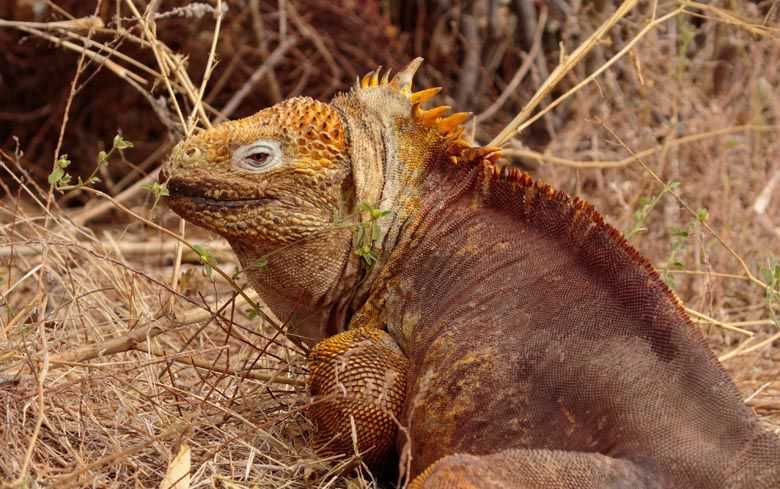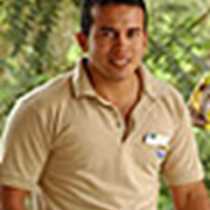We anchored right off the coast of Santa Cruz Island, within view of a visitor site known as Dragon Hill. A large area covered with incense trees and black lava rocks could be seen from the distance. After breakfast, we had a dry landing to explore the endemic flora and fauna of Santa Cruz Island. Once on the trail, we encountered a large area with large palo santo trees and Galapagos cotton plants, common vegetation along the arid zone.
We came to Dragon Hill to see the endemic Galapagos land iguanas and they did not disappoint. We were able to find several of these yellowish golden reptiles. Some basked under the equatorial sun, while others ate small pieces of prickly pear cacti. The Galapagos National Park put a lot of effort in controlling the number of introduced species, like feral cats and goats, which were a threat to the natural propagation of Galapagos land iguanas.
After our land expedition, we got ready to go deep water snorkeling along the coast of Guy Fawkes islets, a couple of small satellite islets off the coast of Santa Cruz. At the snorkeling site, we encountered large schools of yellow-tailed razor surgeonfish, a few Galapagos sea lions playing with us while swimming along, a couple of white-tipped reef sharks, and colorful marine invertebrates on the vertical wall of these islets.
At lunch time, we were delighted by an incredible amount of flavors all put together for us in a traditional Ecuadorian lunch. Ecuador has a large variety of flavors per province, whether these are foods from the Andes, the Coast, the Amazon, or Galapagos.
In the afternoon we disembarked at Borerro Bay, where some of us had the opportunity to kayak and paddle board along the coast. Others chose to go on Zodiac rides along the coast to encounter small inlets surrounded by white and red mangroves providing shelter for baby black-tipped reef sharks, small eagle rays, juvenile snappers, and crustaceans among the roots of the mangrove area.
Santa Cruz was full of wonderful wildlife encounters!







